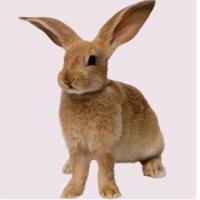Pesan: 13
Bahasa: English
darkweasel (Tunjukkan profil) 31 Maret 2010 21.05.54

LyzTyphone (Tunjukkan profil) 31 Maret 2010 21.57.45
I LOVE You so much I want to kiss you. Will you upload it on YouTube please~?
I can assure you I find no article about that on Vikipedia or ReVo. How is the luck with PIV?
andogigi (Tunjukkan profil) 31 Maret 2010 22.23.16
darkweasel:Hello everyone, does somebody know how to call these fish in Esperanto? I'm translating Charlie the Unicorn 2 to Esperanto, which is why I need this (they say fugu)."Fugu" is the Japanese word for the fish. I've heard many names for them, but in the states we usually call them "blowfish". I can't find an entry for the animal in Wells. How about "pufigfisxo"?
BTW, I refuse to eat this fish. In Japan, you have to have a license to prepare them. They are very toxic. If made incorrectly, you could go to the hospital. They even put warnings on the menus. Many Japanese people love to eat this fish, but I don't have the courage.

andogigi (Tunjukkan profil) 31 Maret 2010 22.35.11

I've also heard them called "balloon fish" in English. Maybe "balonfisxo" would be a good translation. In Spanish, they call them "el pez globo" which could mean "globe fish" or also "balloon fish", so this might work better.
Alciona (Tunjukkan profil) 1 April 2010 00.13.15
andogigi:I thought it might help to look up the Chinese characters the Japanese use to write "fugu". It seems they are 河豚 and they mean "river" and "pig" respectively. Probably not much help...They're also called pufferfish. I typed it into Traduku.net and it came up with balonfiŝo, so your initial suggestion seems best, Andogigi. It comes up with the alternatives fuguo and fuguaĵo, but they appear to be neologisms.
I've also heard them called "balloon fish" in English. Maybe "balonfisxo" would be a good translation. In Spanish, they call them "el pez globo" which could mean "globe fish" or also "balloon fish", so this might work better.
Leporino (Tunjukkan profil) 1 April 2010 06.30.22
darkweasel:Hello everyone, does somebody know how to call these fish in Esperanto? I'm translating Charlie the Unicorn 2 to Esperanto, which is why I need this (they say fugu).Ha ha ha, that's great!!! I hope you don't just subtitle it!
I want to hear that "CHARLEEEEEEY" in Esperanto!


darkweasel (Tunjukkan profil) 1 April 2010 09.20.21
Leporino:The biggest problem will be to find voice actors.darkweasel:Hello everyone, does somebody know how to call these fish in Esperanto? I'm translating Charlie the Unicorn 2 to Esperanto, which is why I need this (they say fugu).Ha ha ha, that's great!!! I hope you don't just subtitle it!
I want to hear that "CHARLEEEEEEY" in Esperanto!
 I could voice Charlie, but once I've finished the text of all three parts, I'm going to need some female voices (for the two other unicorns and - in part 2 - the bananas).
I could voice Charlie, but once I've finished the text of all three parts, I'm going to need some female voices (for the two other unicorns and - in part 2 - the bananas).Anyway, I'll go with balonfiŝo, thanks for your suggestions.
ceigered (Tunjukkan profil) 1 April 2010 09.25.10

BTW, anyone else find the kanji for fugu similar to the kanji for dolphin? River pig vs. Sea pig - did the ancient Chinese who gave half these compound kanji to Japanese not like sea animals very much?

darkweasel (Tunjukkan profil) 1 April 2010 09.36.03
ceigered:Fuguo seems to refer only to the dish so it depends - are you talking about the Japanese dish or about the fish?About the fish.
ĈARLO LA UNUKORNULO 2: LA BANANOREĜO
b: jen, tie estas koralaro!
ĉ: ah, vi uloj! kaj vi ŝvebas!
b: ĉarlo, ni plonĝas, ĉarlo!
r: ni esploras la profundaĵojn de la maro!
b: ho, ne! jen venas aro de venenaj balonfiŝoj
r: ne! balonfiŝoj
ĉ: jes, vi devas esti atentemaj pri ili. do foriru, mi televidas.
b: la vortico malfermiĝis!
ĉ: nu, bone, kio estas tio ĉi?
b: ĉarlo! ni envorticiĝas!
r: fornaĝu, balonfiŝo, fornaĝu!
ĉ: vi uloj nervozigas min! malŝaltu ĉi aĵon!
b: ne eblas haltigi la vorticon, ĉarlo!
r: balonfiŝo!
...
andogigi (Tunjukkan profil) 1 April 2010 10.18.19
darkweasel:This is great! I hope we get to see your work when it is finished!
ĈARLO LA UNUKORNULO 2: LA BANANOREĜO



